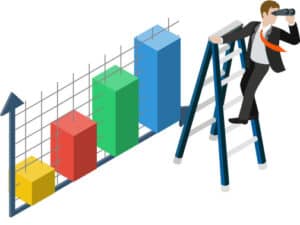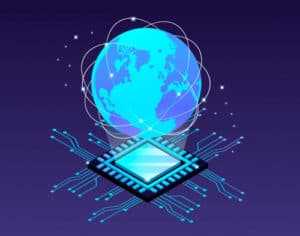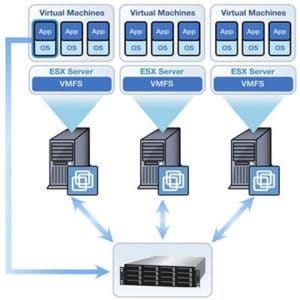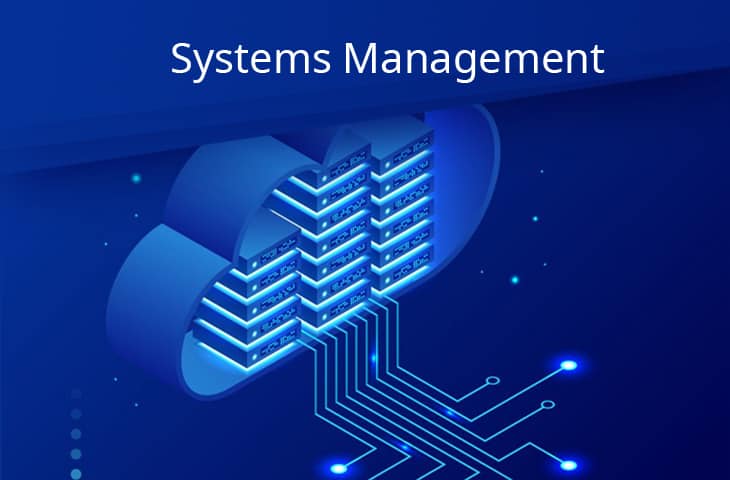If you work in IT then the chances that you have worked with IT Systems Management software is quite high.
Systems Management software systems give an organization the ability to manage the IT systems and services in an efficient way, while remaining easy to use and simple to administer and maintain.
From within these systems, employees can manage vendors, users, suppliers and even support tickets if necessary.
The level of functionality that you need will differ from department to department, and company to company, so finding the best system will take thought and careful research.
Some organizations need to manage both on premise solutions, as well as remote cloud systems that are hosted off site at the same time, so all of these factors need to be considered.
Administering an IT Systems Management software suite is a challenge, and it requires many different users to make sure that the right data is always being fed into it.
The sole responsibility of the system normally rests on the highest technical member of staff, such as the CIO or IT Manager.
The IT department or IT procurement department normally oversees the functioning of this system, but your specific technical support will be determined by the management structures within your company.
IT Management systems also plug into other systems as well. Purchase orders, Work Orders, Invoices, Support Tickets, Quotations – all of these different systems are catered to by an overarching IT Management System, or a combination of multiple systems that all connect to one another.
Sometimes one system has multiple modules that only apply to specific departments or positions within a company, but all data is drawn from a central source.
Systems that Run in Parallel with IT Management Systems:
Managing the life-cycle of applications and other software is a critical function within an organization, this is because the licensing and procurement of these applications requires concentrated action from the IT department.
This means that the applications and software that ages needs to be phased out, and upgraded versions and replacement systems need to be phased in. Another name for these systems is Application Management Systems.
They allow you to track any changes to user’s systems and what software that has been installed or removed. Some AMS installations will allow you to manage software documentation, user experiences, and other software-oriented functions.
Being able to track the hardware and equipment within your IT department and the rest of your company is also really important.
Having adequate stock control and asset management is also important because you need to know how old your infrastructure is, the warranty status of all of your critical hardware components, as well as the overall replacement costs that you would face if the units are out of warranty.
Another name for this software is called Asset Life-cycle Management, and it encompasses many other facets of IT hardware management such as roll-outs, distribution, decommissioning and disposal during the course of a hardware cycle.
Depending on the size of your company you might need to have automation tasks that complete without the active intervention of your IT department.
Tasks such as serial number collection, user data such as login and logout events, printer and hardware management can all be accomplished through automation.
Anything that could be associated with daily tasks can also be taken over by an Automation Management System.

Capacity Planning Management is another important type of software that will help you with the management and administration of your company’s plans for expansion and overall resource availability – especially for Virtual Machines and Hyper-visors.
These software installations can help you to properly foresee what the potential requirements are for your department in the coming weeks and months.
If you need failover space for your backup hardware, or a fail-over internet connection in case your primary one fails, then capacity planning management will help you to get this important set of activities completed and documented quickly and efficiently.
If you need to keep track of all changes that get made on your network to both computers and settings, then using a change management software suite will help you to do exactly that.
Some organizations have a regulatory requirement to keep a well documented history of change events that happen on the network.
This also applies to hardware and people that use the systems, depending on the system requirements of your company.
Cloud life-cycle management is a relatively new concept for the modern organization, but with the rise in popularity of cloud-based solutions has come the requirement to be able to properly manage and monitor these systems from a systems management point of view.
This means that all aspects of your cloud solution, whether it is a hybrid or pure solution, can be tracked from one important Cloud Life-cycle Management solution.
Services that are billed on a monthly basis can be easily tracked, upgraded or removed from a single convenient location.
Compliance Management Software is important because it allows organizations to follow the specific industry regulations so that they are compliant with legislation that is set out by government.
This makes compliance a much easier target to achieve for the organization's staff that are responsible for making sure that these guide lines are followed correctly.
Configuration Management is another area where a precise record keeping is essential so that all of the hardware and software that your company owns can be properly tracked and managed.
This software also allows you to maintain and change details for the changes that take place within the organization, making it much easier to update and change the details of the environment as changes occur.
Cost management Tools and Software allows your decision makers to create efficient strategies and plans so that upcoming projects and roll-outs are properly budgeted for.
In order to plan and control the expenses within the IT department there needs to be an accurate cost management platform that properly installed and implemented.
This helps the organization to stay on target and under budget.
Data Management is another vital function that modern businesses need to have control of in order to function properly.
This allows for the creation and management of data by organizing and centralizing it in uniform and accessible ways.
This encompasses everything from file storage and data recollection to backups and disaster recovery facilities.
Anything that is seen as essential for the continuation of business operations can be stored and accessed through data management services and applications.
Data Center Infrastructure Management integrates many different sources of data into a single solution. It can give you information about all of your servers, SANs, switches and other vital hardware that keeps your mission critical systems up and running.
These information sources will sometimes combine with call logging software which alerts your engineers about any issues that are picked up when there are any problems.
Some server rooms are equipped with intrusion detection that notifies security and IT staff when a breach is detected, which also helps with access control.
Help Desk Management is a really important aspect of Systems Management Solutions, particularly where you need to manage and control the support teams that you have all around your company.
Helpdesk tickets not only keep your IT support staff on target and up to date with issues around the organization, but also act as a vital information store where things like trends and patterns of support issues are tracked and managed.
IT Service Management lets you and your team create and manage the creation and implementation of systems that aid you in the design and delivery phases of the various services that you need to get the job done in your IT department.
This helps you to create a stable system that will facilitate you with the management of your IT services, saving your business time and money.
Network management systems  give you the visibility and control over the different segments of your network, both wired and wireless.
give you the visibility and control over the different segments of your network, both wired and wireless.
Network management systems allow you to control the access to your network resources such as wireless client access to the internet, local connectivity options and everything else that relates to your network.
Performance management is another useful form of System Management, and it helps you to keep track of your performance metrics such as Key Performance Indicators and Service Level Agreements.
You will be able to track the efficiencies of your teams and service providers. This gives you a fine level of control and will enable you to accurately measure and manage performance.
Security Information and Event Management aids you in the secure operations of using your network, devices and internet usage.
Security alerts that trigger your security thresholds will alert your security teams to suspicious behavior and improve resource use.
Server Management Tools & software systems help IT teams to monitor the back-end infrastructure such as servers and virtual hosts, and will give you a clear view of what is happening on all of these systems.
Alerts and alarms will come up from time to time whenever there are critical events, and can make a big difference when there are problems.
This can save you a lot of down time and issues if you pick up issues ahead of time.
Storage Management encompasses a wide range of mixed storage and retrieval solutions, including file and data storage.
These systems can be housed on site as a local solution, or remotely in a secure cloud environment.
There are different kinds of installations for these systems:
- Local storage for disaster recovery and local file retrieval.
- Hybrid storage solutions that use cloud and local storage.
- Pure Cloud Storage solutions that use remote hosting storage sites as the method of storing valuable data.

Virtualization management is really important for most organizations because of the way that virtual machines for the backbone of operations.
Virtual machines allow companies to deploy multiple servers with limited hardware, allowing them to spread the load across multiple virtualized computers.
Managing these virtual machines is really important because the resources that each one uses need to be managed carefully so that performance is not hindered.
Drops in performance can have severe consequences for company systems, so keeping a close eye on system health and resource allocation is essential.
Conclusion
As you can see, there are many different IT Systems Management solutions out there, each with their own specific niche role to play within the organization.
That is not to say that there aren’t some applications that allow for multiple tasks to be combined into one solution, but the general trend is for specialized applications to be installed for a specific function.
The more specialized the software, the more focused the attention to each individual function will be.
Finding the right solution for your specific scenario requires a bit of research and a lot of trial and error.
Testing out solutions and checking out how they will fit into your organization is one of the best ways to accomplish this, and luckily there are many products on the market that let you evaluate them on a trial basis before you commit to purchasing anything.
Testing out as many solutions as possible is the best way to find your ideal systems management software solution, so look around at what is on offer.
You might be surprised to find that the exact function that you need the application to perform has already been created, and is just waiting for you to install it and test it out.




